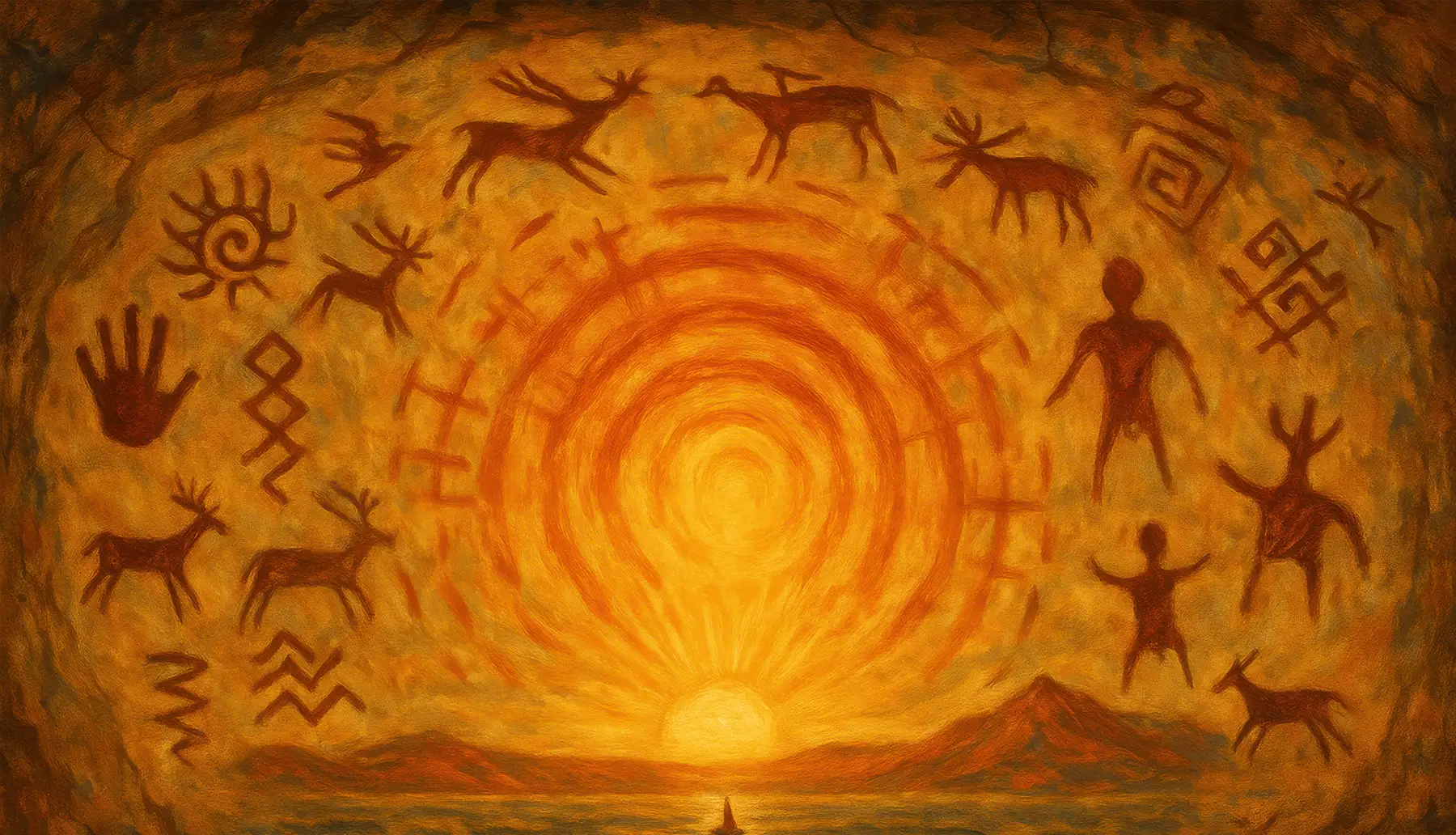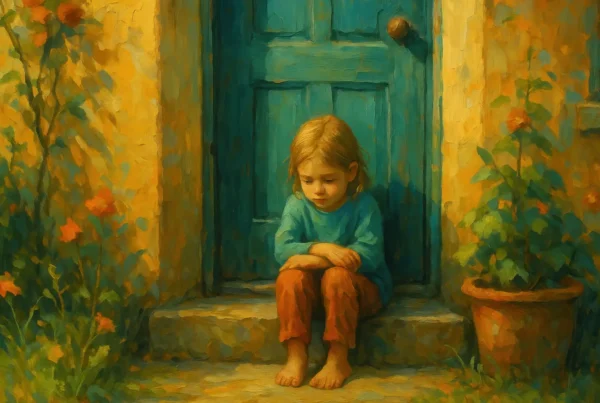BOOK YOUR WORKSHOP TODAY
All posts published here are presented as casual conversation pieces to provoke thought in some direction or another, they do not necessarily represent fixed opinions of the Inner Council, as our work exists beyond the spectrum of bound statement and singular clause.
Inner child work reawakens the psyche’s original transparency, showing the child as the integral witness leading us toward deeper clarity and wholeness.
Key Takeaways
- The child holds the psyche’s original transparency and emotional truth.
- Differentiating the fourfold self reopens the inner architecture.
- Meeting the child at the memory-doorway reveals the past without overwhelm.
- The child becomes the witness, showing what the adult forgot to see.
- Integration is ascension: the adult must escort the child to higher consciousness.
- Simultaneity emerges—multiple inner layers become present at once.
- The child becomes the compass toward an integral, transparent mode of being.
The Forgotten Transparency of Early Consciousness
Before language, before timelines, before the adult self took shape, the child lived in a world that was not yet divided. Everything was immediate, symbolic, permeable. Feelings, images, sensations, and relationships blended into a single field of knowing. In this early consciousness children live in their experiences. This is what Jean Gebser called the early magic and mythic structures: states where the psyche is transparent to itself, where the inner and outer flow into one another without distortion or defence.
Children do not say, “I am sad.” They simply are the sadness.
They do not imagine symbols, the symbol is the experience itself.
They do not conceptualise time, everything is now.
This early transparency is direct perception, which is a fragile state. As the child grows, this natural transparency becomes layered over by:
- survival strategies
- social conditioning
- emotional overwhelm
- developmental ruptures
- adult expectations
- rational structuring
- the need to “make sense”
By adulthood, what was once clear becomes opaque. The psyche is no longer permeable; it is defended. We do not see through ourselves, we see from the inside of old structures that we’ve forgotten how to question. Yet something remarkable happens in inner child work: When the adult begins the journey inward, the child’s original transparency resurfaces. A memory, a feeling, a posture, a doorway from childhood—all become luminous again, not as regression but as recognition.
The child never lost transparency. We simply lost the ability to perceive it.
Inner child work becomes the process of rediscovering this original clarity—not as children again, but as adults who can finally hold it. The transparency that once came naturally now returns as a deeper, more stable form of consciousness. This is the beginning of remembering who we were before we learned to hide.
The Fourfold Self: Reopening the Psyche’s Inner Architecture
To rediscover the transparency we once lived in, the psyche must first become articulate again. What was once a seamless field of experience now needs structure—not to limit us, but to allow us to see. The Inner Council’s fourfold model provides exactly this: a way to reopen the inner architecture of the self. In everyday adult life, the psyche operates as a single fused layer. Emotion, memory, identity, reaction, and responsibility all collapse into one sense of “me.” When something triggers us, the feeling seems current—even if it comes from decades ago. This fusion keeps the inner world opaque.
But when we divide the self into four distinct roles—
- The Adult Self
- The Parent Self
- The Spiritual Self
- The Child Self
—something transformative happens.
We begin to perceive the psyche not as a blur, but as a living ecology.
The Adult Self
The presence-anchored observer: capable, measured, appropriate, aware of time.
This is the self that can hold space without collapsing into emotion.
The Parent Self
The one who protects and guides: firm, responsible, nurturing without overidentifying.
This is the self that restores order and safety.
The Spiritual Self
The perspective of depth: compassionate, spacious, connected, and unthreatened by contradiction.
This is the self that sees the whole field at once.
The Child Self
The emotional truth: the carrier of memory, sensation, vulnerability, and original transparency.
This is the self that holds what the others forgot.
Once these roles are named, the psyche stops being a monolith and a clarity returns allowing us to recognise, with precision:
- who is reacting
- who is wounded
- who is responsible
- who is witnessing
- who needs care
- who can give it
In Gebser’s language, this is the shift from opaque fusion to diaphanous structure—the first appearance of transparency.
The fourfold self does something that no purely therapeutic model can achieve: it allows multiple modes of consciousness to be present at once. Mythic, emotional, rational, and spiritual layers all reveal themselves without collapsing into one another.
What was once a single voice becomes a council.
What was once confusion becomes relationship.
What was once a wound becomes a doorway.
And through this doorway, the child will soon appear.
The Threshold Encounter: Meeting the Child at the Doorway of Memory
Once the inner architecture is reopened, the psyche reveals its next truth: the child does not live in abstractions. They live in places.
Every participant, without prompting, finds the child waiting at a threshold—usually the doorstep of the first home they remember. This is not nostalgia. This is not imagination. It is psychological precision. The child part resides exactly where the emotional world first formed. The doorway is a liminal space—neither past nor present, neither memory nor fantasy. It is the seam between structures of consciousness. When the adult arrives here, they are not regressing. They are crossing into a mythic geography that has always existed inside the psyche.
This doorway holds enormous symbolic intelligence:
- It is the threshold the child could not cross alone.
- It is the boundary the adult forgot.
- It is the place where time folds, and transparency begins.
In this encounter, participants often feel a sudden atmospheric shift, as if they have stepped into a room where the air has a different density. Vision becomes inwardly bright. Details sharpen. The emotional truth of that younger self becomes unmistakably present. The child is found.
This location carries memory in its architecture:
- the texture of the walls
- the shape of the doorway
- the quality of light
- the atmosphere of the home
- the sense of being welcome, ignored, or afraid
These impressions rise from the deeper layers of memory, bypassing the rational mind entirely. The mythic and emotional structures reveal themselves with immediacy, and the adult begins to perceive the child not as a concept, but as a real presence, waiting with all the truth they have carried alone.
This is the first true moment of transparency, the past becomes visible without overwhelming the present.
And in this clarity, the child becomes a threshold guardian: a being who cannot let the adult ascend to higher consciousness until they are met, acknowledged, and understood.
Here, transparency takes on its mythic function.
The doorway is not a metaphor. It is a summons.
The adult has arrived at the place the child never left.
And everything from here begins with that meeting.
The Child as Witness: Revealing Emotional Truth and the Shape of the Past
At the threshold, the child does not speak in essays. They do not offer explanations, timelines, or tidy summaries. The child reveals the truth in the only language they have ever had:
posture, expression, atmosphere, and feeling.
This is where the transparency of early consciousness returns with full force.
The adult does not interpret the child. The child shows the adult exactly what happened—not as information, but as embodied memory:
- how they stand
- how tightly they hold their shoulders
- whether their eyes meet ours or look down
- whether they retreat, run forward, or freeze
- the way their breath moves
- the emotional weather inside the moment
This is not imagination. This is the emotional record the body has kept, surfacing through symbolic form. The child becomes the witness to what the adult forgot. In this moment, the psyche becomes truly transparent:
- Emotion is no longer abstract; it is visible.
- Memory is no longer distant; it is present.
- The past is no longer fused with the adult; it is held by the child.
Here, participants consistently report:
- “I can see exactly how I felt back then.”
- “This child is still holding something I didn’t know I avoided.”
- “It’s like the truth has been waiting for me.”
The child’s transparency cuts through years of rationalisation, avoidance, and adult habit. There is no distortion left—only the clarity of lived experience.
This is why the child is the integral witness. The adult sees, the spiritual self understands, the parent feels prompted to protect—but the child is the one who knows. The child holds the original imprint of the moment before the psyche learned to hide, compensate, or fragment. Here, the child reveals:
- the need that was unmet
- the fear that was swallowed
- the question that was never answered
- the longing that remained unspoken
- the wound that shaped the later self
This witnessing is not passive. It is revelatory. In Gebser’s terms, this is the mythic consciousness becoming transparent to the mental and spiritual structures simultaneously. The child stands at the centre of this convergence. And in this moment, the adult finally understands:
The child is not weak.
The child is not helpless.
The child is the truth-bearer —
the one inside who never stopped seeing clearly.
When the child’s witness is received, the entire emotional architecture of the past becomes workable, for the first time.
Integration as Ascension: Bly’s King, the Upper Room, and the Emergence of the Adult Guardian
In Iron John, Robert Bly writes that the wounded boy cannot enter the upper room of the castle—the place where the king waits. The ascent is impossible until the boy has been acknowledged, protected, and accompanied by the mature masculine within. This is not simply mythic storytelling. It is psychological architecture.
The “upper room” is the higher structure of consciousness, the integrated, coherent, sovereign adult self.
The “king” is the one who governs the psyche with clarity and compassion.
But the boy, carrying the wound, cannot climb the stairs alone.
His feet are too heavy with unmet needs, fear, and emotional memory.
His body is too fused with the past.
He waits at the threshold, unable to proceed. This is why the adult must appear.
Inner child work reveals this exact dynamic with uncanny accuracy:
- The child is waiting where development stalled.
- The adult has been living above the stairs, disconnected.
- And the castle—the inner world—cannot function while these two remain apart.
When the adult steps into the role of guardian, something mythically precise occurs: The adult escorts the child upward, not by force, but by presence. This is the ascension of the psyche.
The adult says, in words or in essence:
“I see you.
I understand what happened.
You no longer carry this alone.
I’ll take you with me.”
In this moment, the inner hierarchy reorganises:
- the adult resumes leadership
- the child relinquishes survival strategies
- the parent-self awakens to its protective role
- the spiritual self holds the entire ascent in compassion
This is the inner coronation—not the adult becoming king over the child, but the adult becoming king with the child. The child’s transparency becomes the foundation of the adult’s sovereignty.
Bly’s symbolic staircase is literal in psychological terms:
- You cannot enter the higher room without the child.
- You cannot achieve integration while a part of you waits at the threshold.
- You cannot access higher consciousness while the earlier structures remain unmet.
This is why the child is not the obstacle —
the child is the key.
Only a met, held, and understood child can walk the stairs with the adult.
Only a unified inner pair can enter the upper room.
Only a psyche that carries its past with compassion can move into its future.
This is integration as ascension. This is the mystical geometry of healing.
And this ascent prepares the ground for a new form of perception—the very capacity for simultaneity that Gebser calls the integral consciousness.
Simultaneity and the Integral Witness: Recovering Multi-Layered Consciousness
When the adult and child ascend together, something becomes possible that was never available when the psyche was fused or fragmented:
the ability to hold multiple layers of consciousness at once.
This is the essence of Gebser’s integral structure —
simultaneity.
Not higher, not transcendent, not detached —
but co-present.
In inner child work, this multi-layered perception arises naturally, without effort or spiritual ambition. It emerges because the child and adult are finally in relationship rather than opposition.
The Adult perceives the present.
Time, context, appropriateness, responsibility.
The Child perceives the emotional truth.
Memory, sensation, vulnerability, transparency.
The Parent perceives the need for protection.
Boundaries, reassurance, guidance.
The Spiritual Self perceives the whole field.
Compassion, stillness, context beyond the personal.
When these perspectives overlap, the psyche becomes transparent from within.
Nothing is hidden.
Nothing is abandoned.
Nothing overwhelms.
This is the arrival of inner simultaneity:
- you can feel emotion and remain present
- you can see the past and stay grounded in the now
- you can witness a wound and hold it from the healed observer
- you can honour the child and stand in adult responsibility
- mythic imagery coexists with rational clarity
- intuitive insight coexists with emotional honesty
This is not dissociation.
This is not analysis.
This is awakening.
It is the recovery of the original transparency the child lived with—but now held with the adult’s stability and the spiritual self’s spaciousness.
In this state, people often say:
- “I can feel two ages of myself at once.”
- “It’s like my whole inner world is visible.”
- “I understand the child and the adult simultaneously.”
- “I see through the emotion instead of being swallowed by it.”
- “Everything is happening inside one field now.”
This is the child becoming the integral witness.
The child is not a remnant of the past.
The child is the anchor point around which the psyche becomes transparent.
The child is the one who shows the adult how to see again.
Because the child never lost simultaneity.
The child never lost the multi-layered awareness.
The child never lost the original way of perceiving through experience instead of around it.
It was the adult structure that became opaque, rigid, and over-defined.
Now, reunited, the child and adult generate a field of consciousness that is:
- layered
- coherent
- transparent
- multi-perspectival
- emotionally honest
- mythically alive
- spiritually grounded
This is the inner council in motion.
This is the integral psyche awakening.
This is the return of the witness who sees through all layers—not by rising above them, but by inhabiting them fully, all at once.
Conclusion: The Child as the Compass of the Whole Psyche
In the end, the journey inward reveals something both humbling and astonishing: the child we thought we had outgrown is the very figure who carries the map of our becoming. The child is not a remnant of the past, nor a fragile pocket of pain trapped in an earlier time. The child is the guardian of transparency—the one who never stopped seeing the world with the clarity, immediacy, and truthfulness that adulthood forgot.
When we meet the child at the threshold of memory, when we witness what they have held, when we escort them into the upper room of the psyche, we do more than heal a wound.
We restore the inner architecture that makes integration possible.
The adult brings stability.
The parent brings protection.
The spiritual self brings depth.
But it is the child who brings vision.
The child shows us how we once perceived—directly, mythically, symbolically, and without distortion. And when that vision is taken into the adult frame, a new consciousness emerges: one that can hold many layers at once, one that sees through emotion without bypassing it, one that honours the past while moving freely in the present.
This is the integral witness.
This is transparency rediscovered.
In this way, inner child work is not merely therapeutic—it is initiatory. It reopens a doorway into the original clarity of the psyche and invites the adult into a deeper form of sovereignty. The child becomes the compass, pointing the way toward a consciousness where nothing is disowned, nothing is hidden, and nothing is lost.
What we reclaim in the child is not immaturity.
It is wholeness.
It is presence.
It is the foundational transparency from which all true growth begins.
The child is not at the beginning of the path.
The child is the path—
the one who waits at the threshold so that the whole self may finally cross.
And visit our Inner Child Workshop page for more information.





